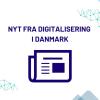From data to knowledge

Advances in hardware and software have helped information science develop significantly in the last couple of years. Machine and deep learning have made knowledge extraction and data analysis much more efficient – helping us to solve problems and make decisions. Although developed before machine learning, the DIKW model (data-information-knowledge-wisdom) is a useful tool for problem-solving and decision making when applied to data science.
As the first in a three-part series titled ‘How data becomes knowledge’, this article takes you through how raw data becomes stored knowledge, identifies data sources, and differentiates between structured and unstructured data. For example, while structured data is easy to retrieve and can easily be dealt with by machines, raw data needs to be prepared and formatted before being analysed. Unstructured data, which can be raw, is better dealt with by humans. But, as the article states, humans are error-prone and the process often takes time - which is where deep and machine learning come in. The article also defines how data can become ‘valuable’ when undergoing data analysis.
Curious to learn more? The second article in the series explores data lakes - their benefits and their architecture.



